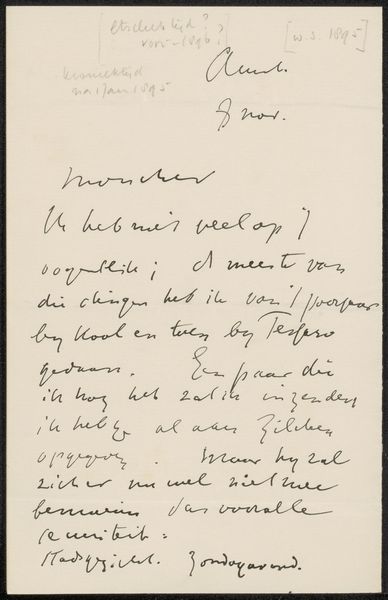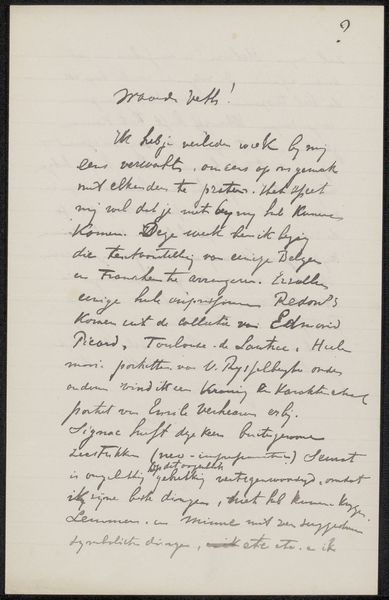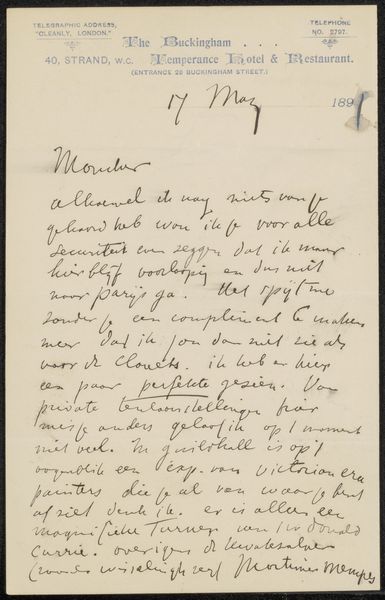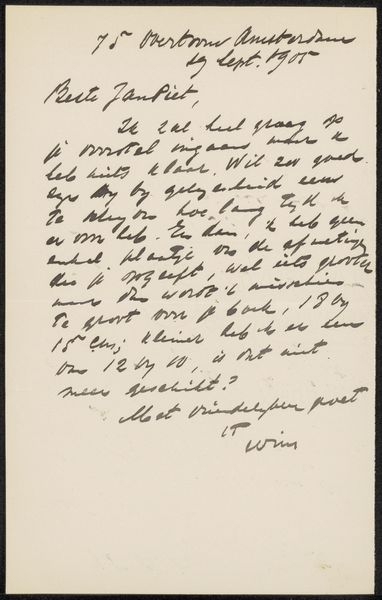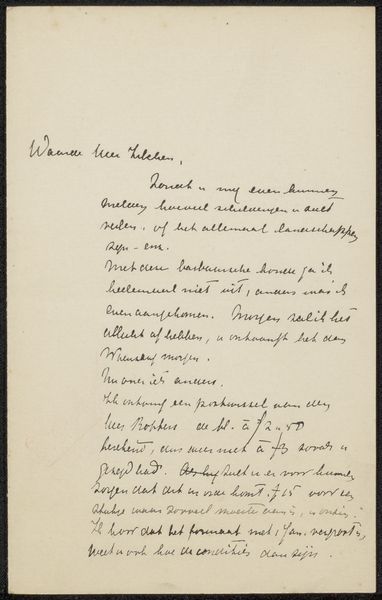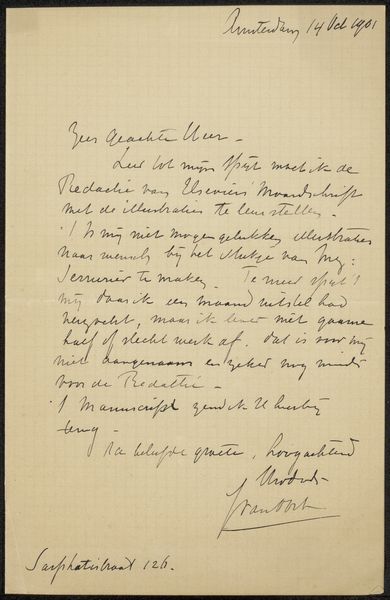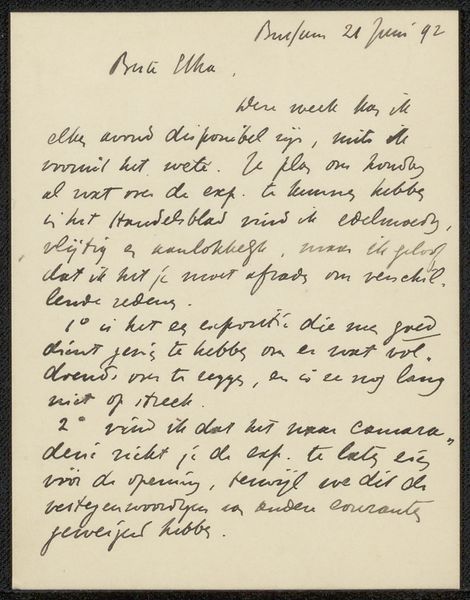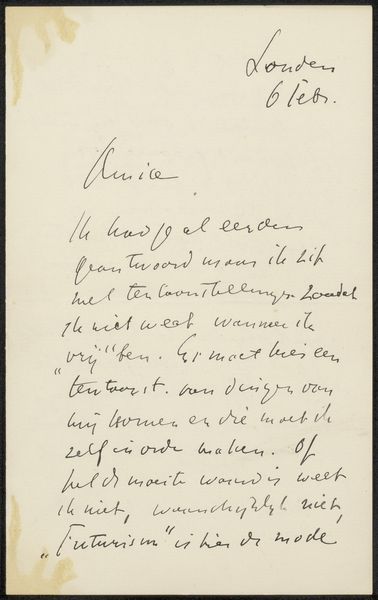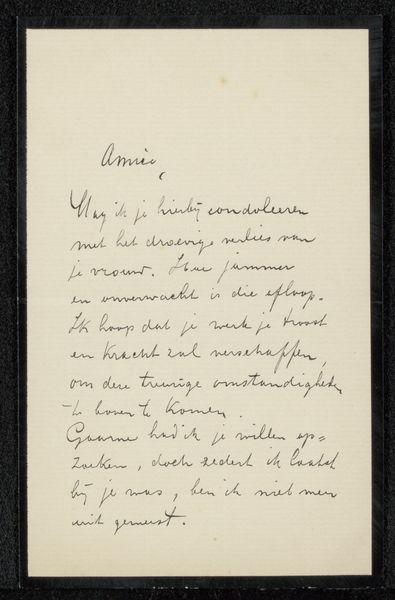
drawing, paper, ink, pen
#
portrait
#
drawing
#
pen drawing
#
book
#
paper
#
personal sketchbook
#
ink
#
intimism
#
pen
#
calligraphy
Copyright: Rijks Museum: Open Domain
Curator: This is "Brief aan Philip Zilcken" a pen and ink drawing on paper, likely a personal sketchbook entry, dating from between 1881 and 1909, currently held at the Rijksmuseum. Editor: My initial reaction? It’s immediate and intimate, the hasty script suggests a writer eager to get thoughts down. It's about something urgent to this writer, not meant to be carefully studied or displayed, more personal. Curator: Yes, it is. Zilcken, the recipient, was a well-known artist and critic, which lends to the letter's historical importance in the art world of that period. Its presence in a major museum elevates a commonplace act of correspondence into an artifact worthy of scrutiny. The letter mentions illustrations for Elsevier, an important magazine at the time. Editor: The materials speak to the everyday realities of artistic practice. Ink and paper—tools of labor. These materials would have been easily available to him at the time. It's far removed from grand, marble statues; we have humble materials put to artistic—and practical—use. How was paper perceived back then in terms of production and consumption? Curator: Paper was becoming more industrialized and accessible, impacting the speed and volume of correspondence and artistic creation. As for consumption, the letter’s tone gives it that feel of a daily routine. It really places you back in that time. Editor: This rapid form of lettering really pushes back against refined calligraphy. It’s utilitarian. I like the energy; the writer seems so frantic to say everything at once. It makes the contents all the more personal. It isn’t something created for show, but rather something very necessary, that needed to be communicated to Zilcken right then. Curator: The beauty in it is how immediate and human it feels. Letters today feel so formalized, to see something with a bit of chaos shows so much personality and intent. Editor: Absolutely, I can appreciate the unedited thoughts. Well, this little peek into history through humble materials leaves me pondering the labor of writing itself. Curator: And for me, it's fascinating to consider how ephemeral communications enter public collections and redefine our understanding of art history.
Comments
No comments
Be the first to comment and join the conversation on the ultimate creative platform.
